People often question what the difference is between a hike and walk. Both involve putting one foot in front of the other, at a pace that is slower than a jog, in order to get from one place to another. But generally speaking, a hike tends to be longer in distance than a walk and on terrain that can be more challenging.
In our guide to hiking for beginners you’ll learn everything you need to know to safely turn your short walks into fun day hikes.
- Make a plan
- Get in shape
- What gear to take hiking
- What to wear hiking
- What to eat on a day hike
- Respecting nature (and what to do when nature calls!)
- Tips for hiking in cold weather
- Tips for hiking in hot weather
To many people, the idea of heading out hiking conjures up terrifying images of long slogs up near-vertical inclines. Of not washing for days, and of getting as far away from civilisation as humanly possible. And although this is a thing of nightmares to those who only see themselves as casual ‘walkers’, to other people it is heaven!
It is important to note at this stage, however, that hiking isn’t scary. It doesn’t have to be tough, steep or remote. And you can certainly do it without abandoning all levels of personal hygiene!
In fact, so long as you’re putting one foot in front of the other and getting outside, hiking can be exactly what you want it to be.
If you’ve never done it before, it’s important not to assume that hiking is something you won’t be able to tackle. You will! And the beauty of hiking is that you can build up to longer and tougher routes as slowly as you like.
So to make sure you are fully prepared for your first hike, we’ve put together a thorough guide to hiking for beginners.
Hiking for beginners: make a plan
Before you go on any kind of outing or excursion it’s important to do some research and planning. Hiking is no different, whether you are new to it or not.
Include the following in your plan:
01When will you be hiking?
The season
If you’re totally new to hiking then aim to get out on your first trip in moderate weather conditions. Winter hiking needs lots of extra gear and knowledge and is best done with someone who knows what they’re doing. Equally, hiking in very high temperatures can also pose challenges. The spring is a good time for beginner hikers to plan their first outings, once the snow has melted and before the temperature starts to rise. But if it’s mid summer and you’re itching to get out then of course this shouldn’t stop you! Just be sure you are well prepared.
Read our section on hiking in hot weather for more information.
Time of day
It’s also important that you don’t head out hiking too late in the day. Even if you are only planning to hike for a couple of hours, it pays to set off in the morning. Starting early gives you plenty of daylight hours and allows for taking a long and casual lunch break, doing some sightseeing, or for inadvertently getting lost!
02Where will you be hiking?
National parks
Hiking offers a unique opportunity to enjoy nature, and allows you access to places you wouldn’t otherwise be able to get to. There are an endless number of trails for beginner hikers in and around national parks. A quick internet search will help you figure out where your nearest park is.
Local trails
You can also find a load of great beginner friendly hiking trails right on your doorstep. Again, a quick search online will point you in the direction of the best trails in your local area. Or take a look at an Ordnance Survey map or topographic map and plan a route on public footpaths and byways right from your front door.
In and around the city
If you live in a big city then you’ll need to get outside of the city limits to find good hiking trails. Contact your local tourist information for where best to go. Alternatively, seek out the biggest park in your city and get stomping round it! Get off the paths and get exploring. You’ll be surprised how far you can go and how much there is to see.
03How far is your hike?
Unless you are used to walking lots, it’s a good idea to keep your first hike on the short side. If the terrain is flat and easy then 4 or 5 miles should be very doable for most beginner hikers. However, if the terrain is very hilly and challenging you will need to find a route that is considerably shorter. Either way, allow plenty of time to complete the hike so that you can rest as much as you want and enjoy the experience.
04Who will you be hiking with?
Plenty of people hike by themselves. And with experience and knowledge it can be a highly enjoyably way to get some time to yourself in the peace and quiet of nature. However, it’s important that beginner hikers hit the trail with company. Not only is it much safer should injury or illness occur, but it also makes decision making and route finding much easier. Plus, it can be a load more fun!
If you’re struggling to persuade your pals to come hiking with you then join a group or a club. Check out Meetup. It’s a great place to find local groups of like-minded people who meet regularly in pursuit of the things they love. And it’s free!
05How will you get to your hike?
The final thing you need to consider when planning your first hike is travel.
By car
If you have a car then you can be very flexible on where you go and what sort of route you plan. You can park at the trailhead, hike to the end of the trail and get the bus back to the carpark. But if there’s no public transport in the area then you will need to plan a circular route that starts and finishes in the same place.
By public transport
If you prefer to take public transport then look for trails that are near to train stations or are close to reliable bus routes. If the area is well connected then it’s likely you’ll be able to plan a linear route, hopping off the train at point A, hiking to point B, and hopping back on, for example.
In some popular hiking destinations there may also be shuttle buses available from nearby towns to the start and finish of the trail.
NOTE: Whenever you are relying on public transport it’s essential to know the timetable and be sure you leave plenty of time to get to the station well before the last train or bus departs.
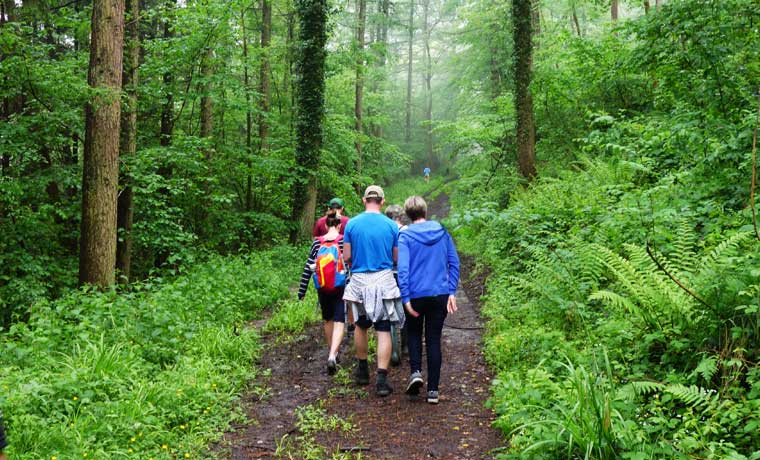
Hiking fitness for beginners: get in shape
Most moderately active people will be able to handle a 4 of 5 mile hike on gentle terrain with little or no training. It may not be easy, but our bodies are (generally speaking) pretty robust and adaptable. Other than getting tired and achy, a short hike should pose few other problems.
That said, it doesn’t hurt to get into shape. And the more prepared your body is for prolonged periods of walking, the more you will enjoy the experience and want to go do it again and again.
Fitness tips for hiking
If possible, allow yourself 3 or 4 weeks to build up a little bit of fitness before your first hike. But even if you only have a couple of weeks it’s not too late to add some simple ‘training’ into your daily routine:
- Try to walk at least half an hour everyday. Park your car further away from work if necessary, get off the bus a stop early, or go for a stomp on your lunch break.
- If you already walk each day, then every couple of days walk for an hour.
- Take the stairs instead of the elevator — everytime.
- Start taking the stairs 2 steps at a time.
- Do lunges while you brush your teeth in the morning. Start with 10 on each leg and build up so that you are lunging the whole time you’re brushing (which should be 3 minutes, right?!).
- Stand on one leg while you brush your teeth in the evening. This helps stabilise the muscles around your ankles and knees. (Don’t forget to switch legs!)
- Once a week take a walk for a least an hour. Choose a place that includes a hill and try to get as far up it as possible without resting.
- If you’re unable to find a route with a hill, then seek out a multi-storey building and do some laps on the stairs!
- Have a day or two of resting before you set out on your hike.
For those planning multi-day hiking trips, read our guide on how to train for hiking.
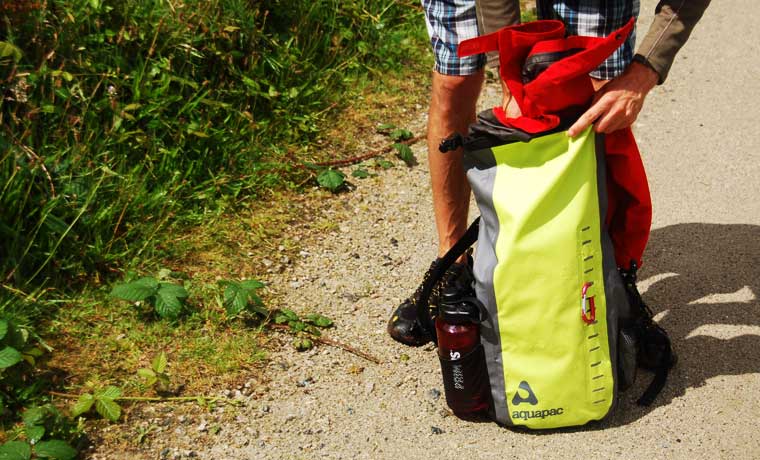
Hiking essentials for beginners: what gear to take
As with all outdoor activities, you could spend every last penny on all the best gear. And although it’s important to have gear that functions well, is comfortable and will last you for years, you can ‘make do’ with what you’ve got, to start with at least!
Personal hiking essentials that you probably already own:
- Backpack – any daypack will do for your first hike. But you’ll soon find that you need something more comfortable, durable and useable. Read our daypacks guide for advice.
- Bottle of water – at the very least you should take 1 litre, (but this depends on how far you are going).
- Waterproof jacket and pants – read the what to wear hiking section for more info.
- Sunglasses
- Insect repellent – depending on where you are hiking.
- Sun hat
- Sunscreen
- Wooly hat – if you’re hiking in cool temperatures.
- Gloves and scarf – if you’re hiking in cool temperatures.
- Food – read the what to eat on a day hike section for more info.
- Spare clothes – read the what to wear hiking section for more info.
- Toilet roll and zip lock bag
Navigation and survival essentials that you may not already own:
- Map
- Compass or GPS device
- Contact information of emergency rescue services.
- Emergency whistle – 3 short bursts draws attention to you if you get lost.
- First aid kit – and knowledge of how to use it.
- Fire lighting kit – the ability to make fire will keep you warm if you get lost overnight and it can also be used for rescuers to find you more easily. Read our DIY fire starter kit guide for more info.
- Headlamp or torch – just in case you get lost after dark.
- Pocket knife – they’re just so useful in all sorts of outdoor/survival scenarios.
Other things you may need:
- Mobile device
- Portable charger for mobile device
Hiking for beginners: what to wear hiking
The below list of hiking clothing includes options that you can buy, but also suggestions and tips on ways to not spend a fortune when you’re just starting out. Once you’re ready to start accumulating high quality hiking clothing, take a look at our more in depth guide to what to wear hiking.

Footwear
Getting your hiking footwear right is one of the most important things to consider. If your feet are in pain or discomfort when hiking then you’ll have a rubbish time and not want to do it again. But it’s also important to make sure you like hiking before you invest in a good pair of hiking boots or shoes.
Top tip for beginner hikers:
If you have a pair of trainers or sneakers that are very comfortable then wear them during your first hike. Be sure that they have good grip on the bottom and laces that can be done up tightly. If possible, stick to dry and relatively flat trails when wearing your sneakers or trainers.
Once you’re ready to upgrade to ‘proper’ hiking footwear you can either go for lightweight hiking shoes that are great for summer hiking and are mega comfortable, or high cut hiking boots that offer more support and protection in wet and challenging conditions.
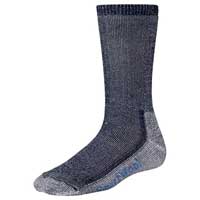
Socks
Wearing the wrong socks when hiking can cause equal amounts of discomfort as wearing the wrong shoes. Avoid cotton socks that take ages to dry and don’t wick away moisture from your feet as they sweat. Instead go for a wool/synthetic blend. It’s also advisable to only wear one pair of socks.
Top tip for beginner hikers:
If you only have cotton socks then it’s worth spending some money on a pair of hiking or running socks, even before you buy hiking boots or shoes. However, if you’re not in the position to buy new socks then be sure to take a spare pair with you. And a blister kit (just in case!).
Take a look at our guide for more advice on which socks are the best for hiking.

Pants, leggings or short
For your first few hikes you just need to have something comfortable on your lower half. Jogging bottoms or leggings are ideal.
Top tip for beginner hikers:
Avoid wearing jeans or denim, unless you can guarantee complete dryness for the duration of your hike. As soon as they get wet they become heavy and uncomfortable, and take ages to dry. Wet jeans can make you really cold and lower your body temperature. And they can chafe your skin pretty badly too!
As you start to do more hikes in varying conditions and terrain, a good pair of hiking pants or leggings is worth investing in.
Check out our favourite women’s pants and leggings, and this fine selection of men’s pants.
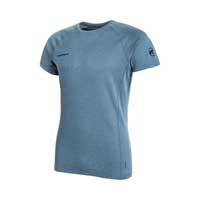
T-shirt or vest
If you plan on hiking in warm conditions then wearing a t-shirt or vest that is loose fitting and comfortable will keep air flowing to your skin.
Top tip for beginner hikers:
If possible, opt for a t-shirt or vest that is made with synthetic fabric — not cotton. As mentioned, cotton takes ages to dry if it gets wet. It also holds sweat close to your body. This is fine if you are hot and moving, but as soon as you stop and your body starts to cool, a shirt that is wet and cold with sweat can soon lower your body temperature.
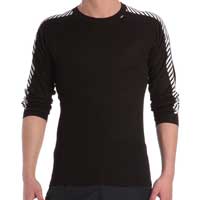
Long sleeved shirt or base layer
Experienced hikers dress like onions — in lots of layers! And it’s a good habit for beginner hikers to get into too, as you never know what the weather will end up doing.
Top tip for beginner hikers:
Add a long sleeved base layer over the top of a t-shirt for extra warmth. Or wear it directly next to your skin to wick away moisture from sweat as you hike. Avoid cotton and opt for merino wool or synthetic fabrics.
In terms of hiking clothing, a good base layer is invaluable in keeping you comfortable and warm, and it will last you years. This should be one of the first pieces of clothing you invest in once you start to hike more. Check out these options.

Sweater, jersey or jumper
You should always take a warm layer to put over the top of your t-shirt or base layer. You may not wear it at all, but if you get to the top of that hill and the wind is blowing a gale, you’ll be glad you brought it along.
Top tip for beginner hikers:
Your warm layer doesn’t really need to be made of technical fabric. A cotton jersey will do just fine. A wooly jumper or fleece sweater will be even better. But it’s unlikely to get as sweaty as your base layer, so moisture wicking properties are not so crucial. Just try to keep it as dry as possible.
When you start to do longer and more challenging hikes, you’ll soon realise the importance of having a warm layer that is lightweight and efficient at insulating your body. Start with a good fleece mid-layer, and then as you move on to hiking in cooler conditions or locations, you may want to consider adding an insulated jacket to your hiking wardrobe.
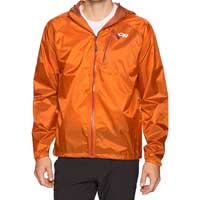
Waterproof jacket
In some climates a decent waterproof jacket is an absolute must for hiking. However, if you are lucky enough to hike in areas where rainfall is infrequent and predictable then you can get away with an inexpensive Mac in a Pac, or similar.
Top tip for beginner hikers:
If you will likely be hiking in rainy conditions, and you don’t have a waterproof jacket, then try borrowing one from a friend or family member for your first outing. Or even buy a second hand one from a charity shop or consignment store. But if you’re sure you want to be hiking lots then it’s worth investing in a good quality rain jacket from day 1.
Ready to buy a good quality waterproof jacket that actually keeps the water out? Read our guide, along with some excellent options.
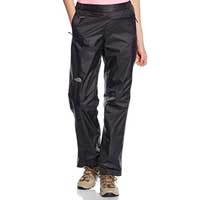
Waterproof pants
As with jackets, waterproof pants are mostly unnecessary in certain climates. However, in areas prone to rainfall you’ll want to pack a pair in your daypack, even if you don’t wear them.
Top tip for beginner hikers:
If you’re hiking in warm summer conditions and rain is possible, you can live without waterproof pants. Instead be sure to wear quick drying shorts or pants that won’t be uncomfortable when wet.
For those hiking in cool rainy conditions you can get away with an inexpensive pair of waterproof pants that will last a good few years before they start to leak and become ineffectual.
Check out our waterproof pants guide when you decide to upgrade to a pair that will perform well and last for years.
Hiking for beginners: what to eat on a day hike
Breakfast
Start the day with a big breakfast before you even head out hiking. Your regular bowl of cereal or slice of toast just won’t cut it. I’m talking, eggs, bacon, toast, pancakes, yogurt fruit AND cereal! Set yourself up for the day.
Lunch
Sandwiches and wraps are an excellent choice for hiking lunches as they are easy to eat without the need for utensils etc. But there are loads of other options if you’re not a fan of sarnies. Just make sure whatever you choose is easy to pack and carry, not too heavy, calorie dense, and easy to prepare and eat on your hike.
Some yummy hiking lunch ideas:
- Tuna pasta
- Chicken and rice
- Crisps/chips
- Smoked cheese
- Oat cakes
- Salami
- Savoury muffin
- A flask of hot soup
- Crackers
- Frittata
- Cheese triangles
- Can of flavoured tuna or mackerel
- Boiled egg
Snacks
See your snacks as rations. They are there to top up your energy levels if you need them, but not to be eaten just for the sake of it. You should bring enough snacks so that if you end up spending longer out hiking than anticipated, you have enough to keep you going long past dinner time.
Some easy snack ideas include:
- Nuts and raisins
- Trail mix
- Dried fruit
- Chocolate bars (although not good in hot weather!)
- Jerky
- Snack bars or granola bars
- Flapjack
- Salted peanuts
- Energy bars or gels
- Chewy sweets or candy
For other ideas of energy-filled yummy treats, check out these hiking snack recipes.
Respecting nature (and what to do when nature calls!)
The Leave No Trace Principles
Most people know that we shouldn’t drop litter or vandalise objects and places. And showing respect to wilderness areas is no different. However, there are a whole load of things to consider when out in nature that you may not realise are important.
To help wilderness spaces stay as wild as possible, a set of principles have been created: the Leave No Trace Principles. These are super important to know and understand before you head out hiking. The existence of the LNT Principles help preserve the wilderness and protect the natural habitats of millions of species, and by doing so, enable us to continue to use and enjoy the outdoor world alongside nature.
To learn more about the principles have a go at our Leave No Trace Principles Quiz.
What to do when nature calls!
If you need to take a pee, find a private spot that’s around 200 feet from the trail and any water sources. If you need to wipe then just pop your used toilet paper in a ziplock bag and dispose of it as normal when you get home.
If you need to poop, dig a hole that is 6-8 inches deep (in a private spot that’s around 200 feet from the trail and any water sources) and do your business. Bury the evidence in the hole, along with your toilet paper.
Find out more in by learning the LNT principles.

Tips for hiking in cold weather
As mentioned, it’s not advisable to head out hiking in winter conditions without the right experience or with someone who knows what they’re doing. However, if you plan on hiking when the conditions are cold, or indeed you live in an area where it’s always cold, these tips will make life easier and safer.
- Wear lots of layers
- Take a flask of hot water, soup, tea or coffee
- Wear a wooly hat, gloves and scarf
- Stay hydrated – you may not feel thirsty but dehydration can accelerate the chances of hyperthermia
- Don’t stop long for lunch
- Stop for lunch in a spot that is sheltered from the wind
- Take an emergency blanket with you
- Consider taking a small stove to cook hot food
- Try to avoid sweating too much – sweat cools when you stop and can lower your body temperature
- Keep checking on your hiking buddies to make sure they’re warm enough — and get them to check on you too!
- Know the signs of hyperthermia
Tips for hiking in hot weather
- Choose a route that is in woodland or that follows a creek
- Drink lots of water – 3 or 4 litres for a full day hike in high temperatures
- Avoid over-drinking – sip regularly
- Take a water filter or water purification device in case you run out of water
- Check that your route has water sources that you can filter or purify
- Wear a sun hat and cover up your skin with lightweight breathable fabrics
- Rest in the shade
- Include salty foods in your hiking menu
- Consider adding electrolytes (like Nuun tablets) to your drinking water
- Reapply sunscreen regularly
- Avoid hiking during the middle of the day
- Know the signs of dehydration and heat stroke
Once you’ve been out hiking a few times and realise how great and accessible it is, you’ll want to start gathering some gear that will last you for many years to come. But just like hiking, there’s no rush! You’ll soon learn what you don’t really need and what you can’t live without. And with each longer and more challenging hike into nature, you’ll also gather more and more experience in traveling through some wonderful wilderness places in the most simple way possible.
Happy hiking!
The post Hiking for Beginners: How to Take Your First Steps into the Wild appeared first on Cool of the Wild.


